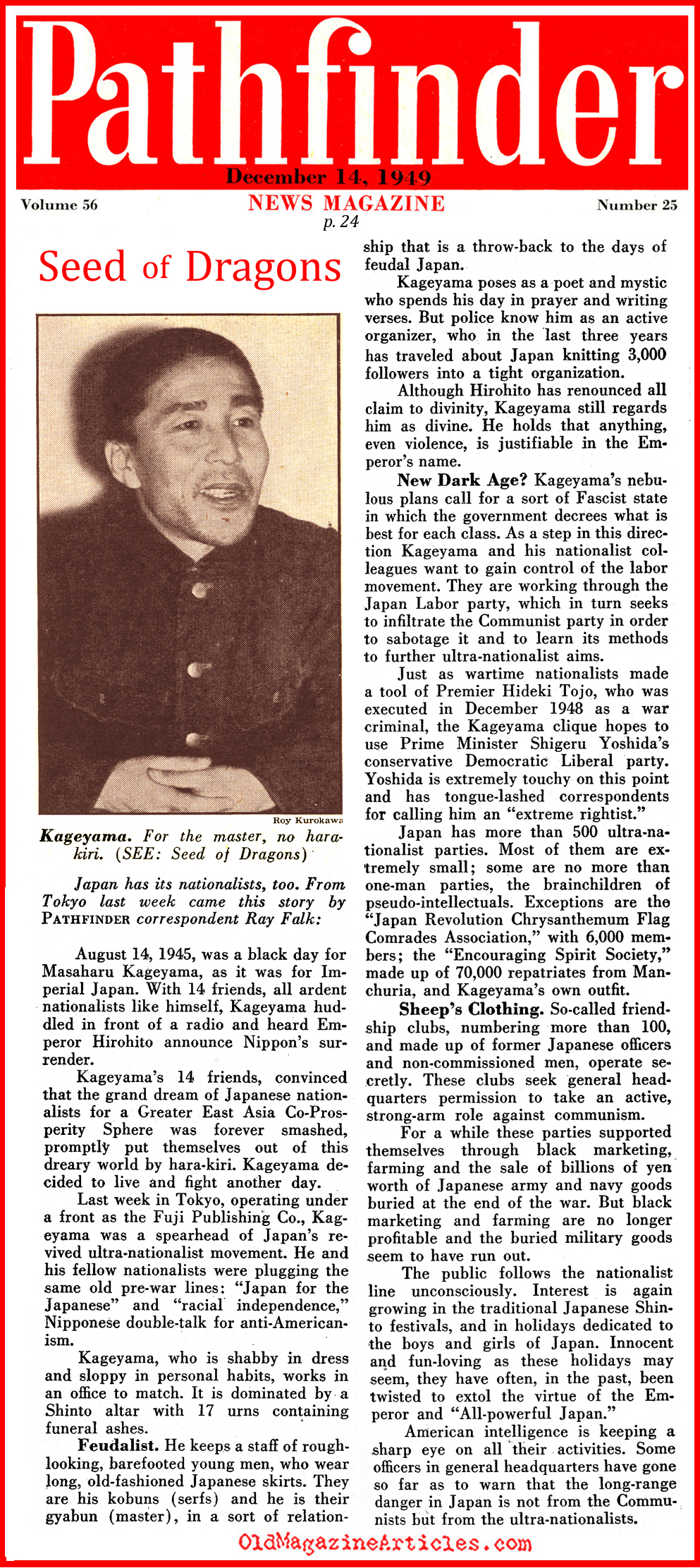The word “chauvinist” takes its origin from from a hard-charging Frenchman Nicolas Chauvin – who was devoted to Napoleon long after he was out of power and proving to be an increasingly irrelevant element within French politics. Upon reading the attached article, we were thinking that perhaps the Japanese lingo has a similar term based on the outdated creeds of Masaharu Kageyama (1910 – 1979)? For as you will find, Kageyama, and his fellow-travelers, was a growing factor in the political landscape of post-war Japan.
Kageyama was something a flat-Earther in his time, choosing the road of the Japanese Nationalist, he held that Emperor Hirohito was indeed divine and the Fascist vision of an “East-Asia Co-Prosperity Sphere” was achievable, even in 1949.
“FEUDALIST: He keeps a staff of rough-looking, bare-footed young men, who wear long, old-fashioned Japanese skirts. They are his ‘kobuns‘ (serfs) and he is their ‘gyabun‘ (master), in a sort of relationship that is a throw-back to the days of Feudal Japan.”
Quaint as all that seems, Masaharu Kageyama had a following and was closely watched by General MacArthur and his lieutenants.
The bookworm pictured above was Soken Fukuda, another Japanese nationalist who was cut from the same cloth as Kageyama.
Click here to read about August 28, 1945 – the day the American occupation began.
KEY WORDS: japanese radicals 1945,radicalism is post-war japan,japanese ultra-patriots Soken Fukuda 1949,Greater East-Asia Co-Prosperity Sphere article 1949









































